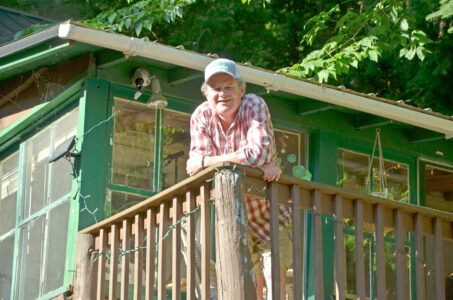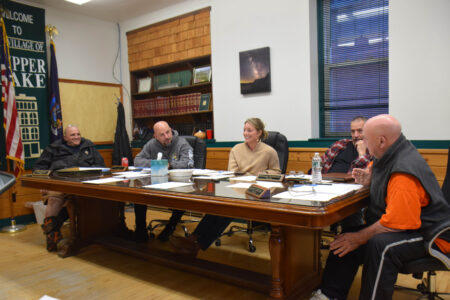Wildlife researchers don’t know why moose is blocking Goodman
TUPPER LAKE — A big bull moose has spent the summer lingering around a popular Adirondack mountain hiking trail, prompting state wildlife officials to close the path as they monitor the potentially ailing animal.
The Goodman Mountain trail in the Horseshoe Lake Wild Forest has been temporarily closed since June 6 due to the oddly behaving animal. The moose is staying on or around the trail near the summit, sometimes sitting and sometimes foraging in a small area, according to the state Department of Environmental Conservation.
Attempts to coax the moose from the trial have failed.
“This is very unusual behavior,” DEC research scientist Dave Kramer said Thursday. “Typically at this time of year, moose will have moved down into the lower elevations where they’re primarily browsing on aquatic vegetation.”
Kramer estimates the moose stands about 6 feet tall at the shoulder and weighs 900 pounds or more. The spread of its antlers indicate it might be around four years old.
And it’s a mystery why the moose won’t move on.
The agency has said an “underlying illness influencing behavior” was suspected. Moose are susceptible to a couple of different parasites that can lead to their deaths.
Wildlife staffers were recently able to get close enough to observe the moose’s behavior but did not find obvious signs of disease.
“Although the moose does appear a little thinner than we would expect this time of year,” Kramer said, adding that it is difficult to make conclusive diagnoses of animals in the wild.
The moose has not shown signs of aggression. But the trail in the town of Tupper Lake remains closed in part over concerns that the large animal could pose a danger to people if approached too closely.
The state is keeping tabs on the moose with three trail cameras, and wildlife staffers make regular treks up the mountain.
“His body condition hasn’t deteriorated to a point where we’re concerned that he’s struggling,” Kramer said. “So right now we’re just kind of monitoring periodically and assessing each time.”
New York is on the southern edge of moose range. The state’s population was wiped out in the 1800s but has gradually grown from animals that wandered in from other northern states and Canada starting around 1980. A DEC report in Otober stated that there are likely between 566 and 716 moose in the Adirondacks.
Conservation officers in January saved a bull moose that fell through the ice of Lake Abanakee elsewhere in the Adirondacks.




